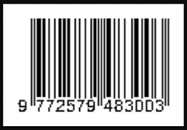MODEL PEMBELAJARAN INVESTIGASI KELOMPOK UNTUK MENGANALISIS BENTANG ALAM HASIL GAYA GEOLOGI MELALUI PENGGUNAAN GOOGLE EARTH
DOI:
https://doi.org/10.32550/teknodik.v0i0.512Keywords:
Google Earth, Investigasi Kelompok, Berpikir Kritis, Bentangalam, Gaya GeologiAbstract
Penelitian ini bertujuan untuk meningkatkan keterampilan berpikir kritis siswa agar dapat melakukan analisis terhadap bentang alam hasil dari gaya geologi. Tindakan yang dilakukan ialah dengan memanfaatkan Google Earth melalui model pembelajaran Investigasi Kelompok. Penelitian ini menggunakan metode penelitian tindakan kelas. Penelitian dilakukan pada kelas X Geology Pertambangan SMK Negeri 1 Binuang dengan jumlah subjek 33 siswa. Data hasil penelitian pada siklus-2 menunjukkan adanya peningkatan kemampuan beprikir kritis dibandingkan dengan siklus-1 dmanasiswa dengan tingkat berpikir (1) kurang kritis, dari yang semula 70% menjadi 12%; (2) cukup kritis, dari 15% menjadi 33%; (3) berpikir kritis, dari 15% menjadi 46%; dan (4) berpikir sangat kritis, dari yang semula tidak ada menjadi 9%.Â
Â
This study aims to improve students' critical thinking skills so that they can conduct an analysis of the landscape resulting from geological forces. The action taken is to utilize Google Earth through the Group Investigation learning model.This research uses classroom action research methods. The study was conducted in class X Mining Geology of SMK Negeri 1 Binuang with a total of 33 student subjects. The data show thatfrom cycle-2 indicates an increasein students’ order thinking skills,whichare: 1) less critical, from 70% to 12%; 2) quitecritical, from 15% to 33%; 3) critical, from 15% to 46%; and 4) highly critical, from 0 to 9%.
References
Buku
Halpern, D.F. (2013). Thought and Knowledge An Introduction to
Critical Thinking. NewYork: Psychology Press.
Slavin, R. E. (2015). Cooperative Learning, Theory Research and
Pratice 2nd Ed. Boston: Ally Bacon Publisher.
Sumarmi. (2012).Model-Model Pembelajaran Geografi. Malang: Aditya
Media.
Thibout, J. (2017). The Social Psychology of Groups. New York:
Routledge.
Jurnal/Prosiding/Disertasi/Tesis/Skripsi
Agustin, A. (2017). Penggunaan Model Pembelajaran
Group Investigation Untuk Meningkatkan Keterampilan
Berpikir Kritis Peserta Didik SMA Negeri 1 Kotabaru. Tesis (tidak
diterbitkan). Malang: UM http://karya- ilmiah.um.ac.
id/index.php/disertasi/article/view/65285
Astra, I.M., Wahyuni, C., & Nasbey, H. (2015). Improvment of
Learning Process an Learning Outcome in Physic Learning by
Using Collaborative Learning Model of Group Investigation at High
School. Journal of Education and Practice, Vol. 6, No.11. hal. 75-
Bednarz, S., W. (2017). Using Action Research to Implement the
National Geography Standard: Teacher Researchers.Journal of
Geography, Vol. 101, No.3. hal.104-111.
Blank, L., Almquist, H., Estrada, J., & Crews, J. (2016). Factors
Affecting Students Success with a Google Earth-Based Earth
Science Curriculum. Journal of Science Education and Technology
(1), hal. 77-99.
Demirci, A., Karaburun, A. & Kilar, K. (2013). Using Google Earth as
AnEducational Tool in Secondary School Geography
Lessons.International Research in Geographical andEnvironmental
Education Vol. 22 No. 4.hal 277-290.
Dwyer, C., Hogan, M., & Stewart, I. (2014). An integrated critical
thinking framework for the 21st century.Thinking Skills and
Creativity. 12, hal 43-52.
Guertin, L. & Neville, S. (2011). Utilizing Google Earth to Teach
Students about Global Oil Spill Disasters. Science Activities Vol.
hal 1-8.(diunduh: 16 Juli 2017).
Hayuna, Budijanto & Utomo. (2018). Pengaruh Problem-Based
Learning (PBL) terhadap Keterampilan Berpikir Kritis. Jurnal
Pendidikan: Teori, Penelitian, & Pengembangan.
http://journal.um. ac.id/index.php/jptpp/article/view/10446
(diunduh: 26 Desember 2018).
Lin, P., Hou, H., Wang, S., & Chang, K. (2013). Analyzing knowledge
dimensions and cognitive process of a project-based online
discussion instructional activity using Facebook in an adult and
continuing education course. Computer & Education, 60, hal.110-
Listiana, L. (2013). Pemberdayaan Keterampilan Berpikir dalam
Pembelajaran Biologi melalui Model Kooperatif Tipe GI (Group
Investigation) dan TTW (Think, Talk, Write). Artikel disampaikan
pada Seminar Nasional Pendidikan Biologi FKIP UNS.
Students Learning Course Design of Geography. Advances in Social
Science, Education and Humanities Research, volume 79.hal.
-319.
Sharan, Y. (2015). Meaningful learning in the cooperative classroom,
Education 3-13. International Journal of Primary, Elementary and
Early Years Education, 43(1), hal. 83-94.
Sidhu, E.P.& Gilberto, C.(2018). Using Google Earth Engine To Detect
Land Cover Change: Singapore as a Use Case. European Journal
of Remote Sensing, 51:1, 486-500,
Stupple, E., Maratos, F., & Elander, J. 2017. Development of the
Critical Thinking Toolkit (CriTT): A measure of student attitudes
and(Online)https://eprints.beliefs about critical thinking.
Thinkings Skills uns.ac.id/8621/(diunduh: 16 Juli 2017).
Oktavianto, D.A., Handoyo, B., & Sumarmi. (2017). Pengaruh
Pembelajaran Berbasis Proyek Berbantuan Google Earth
Terhadap Keterampilan Berpikir Kritis. Jurnal Teknodik. Vol. 21,
No.1. Hal 59-69.
Oktavianto, D.A. & Suyatno, S. (2018). Pengembangan Spatial
Thinking On Map Test (STMT) Untuk Tingkat SMA. Jurnal
Teknodik. Vol. 21, No. 1. Hal 73-74.
Pae, H., Sears, D., A. & Maeda, Y. (2014). Effects of Small-Group
Learning on Transfer: a Meta-Analysis. Educational Psychology
Review. Vol. 27, No.1. Hal 79- 102.
Ratinen, I. & Keinonen, T. (2011). Student- teachers’ use of Google
Earth in problem- based geology learning. International Research
in Geographical and Environmental Education Vol. 20 No. 4, hal
-358.
Sari, Y., Jayanti, & Jamil. (2016). Effect of PBL Learning Model on
Critical Thinking Skills and Creativity, 23, hal. 91-100.
Sudarsana, I., K. (2018). Pengaruuh Mode Pembelajaran Kooperatif
Terhadap Peningkatan Mutu Hasil Belajar Siswa.Jurnal
Penjaminan Mutu, Vol. 4, No.1, Hal.20-31.
Xiang, X., & Liu, Y. (2016).Understanding change through spatial
thinking using Google Earth in secondary geography. Journal of
Computer Assisted Learning, Volume 33 (1), hal. 65-78.
Yu, L.& Gong, P. (2012). Google Earth As A Virtual Globe Tool for
Earth Science Applications at the Global Scale: Progress and
Perspectives. International Journal of Remote Sensing, 33:12,
-3986.
Lain-lain
Brookhart, S. (2010). How to Assess Higher Order Thinking Skills in
Your Classroom ASCD. http://www.ascd.org/Publications/Boo ks/Overview/How-to-
Assess Higher-Order- Thinking-Skills-in-Your-
Classroom.aspx (diunduh: 16 Juli 2017).
Downloads
Published
How to Cite
Issue
Section
Citation Check
License
Please download and complete the Form, Copyright Transfer, and Ethics Statement Form. The following is provided at the time of submitting the text (Upload Additional Files):










